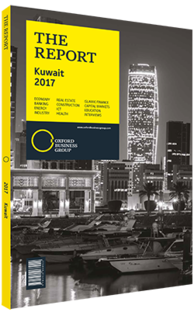Faisal Awwad Al Khaldi, Deputy CEO, Kuwait Steel: Interview

Interview: Faisal Awwad Al Khaldi
How can private sector industrial and manufacturing companies help diversify Kuwait’s economy?
FAISAL AWWAD AL KHALDI: The economy in Kuwait has been heavily reliant on oil revenues and thus impacted by the sharp downturn in oil prices. Kuwait plans to diversify government revenues based on strong growth in non-oil sectors, while encouraging the private sector to play a greater part in the economy. Private participation in government infrastructure projects is very important and would ease pressure on state funds allocated to these investments. These projects can work as a springboard for local manufacturers to establish industry as a significant support to Kuwait’s economy, so it will not need to rely on oil or significant government support in the long term. At the same time, greater private sector growth would help create job opportunities to meet a growing population and an increased demand for jobs.
How will the steel industry and other manufacturers be affected by gradual subsidy rationalisation and the implementation of value-added tax (VAT)?
AL KHALDI: Subsidy rationalisation will have a direct impact on industries that are energy intensive, such as the steel industry. Higher energy and electricity prices would sharply drive production costs up and have a negative impact on operational profitability. The effect on steel manufacturers is exacerbated by the highly competitive environment we operate in. Steel manufacturers may find it difficult to pass additional costs down the supply chain in the face of heavy competition from cheap imports. Furthermore, the introduction of VAT would see a rise in end-user product prices, as the increased production costs would be transferred down the supply chain. One should also expect administrative challenges in local enterprises during the early stages of implementing the new tax system.
Competition is also growing regionally and internationally with the rise in prices of input materials. With improvements in the Chinese market driven by stimulus government funds, raw materials prices for the steel industry have moved up in 2016. The GCC region is also seeing a significant increase in domestic steel capacity that is creating a serious imbalance to the supply-demand equation. This has put high pressure on steel prices in the region. It has been a major challenge to operate under these circumstances with high pressure on steel selling prices coupled with rising raw materials costs. Most countries around the globe are taking trade protectionism measures to protect their local industries from cheap imports, but the GCC is far less protected. Although there have been many representations made at various levels of government in the region to deploy measures to protect local industries, a definitive protection measure is yet to come into force. This has facilitated the entry of cheap imports to the region, challenging local producers.
Where do you see the largest opportunity for growth in the industry and manufacturing sectors?
AL KHALDI: State spending, backed by hydrocarbons revenues and governments initiatives to diversify the economy, will continue to be the main driver for industrial and manufacturing growth in the country. The Kuwait Development Plan 2015-20 envisions largescale plans to improve social (education, health care and housing) and transport (airport, road and rail) infrastructure. As part of this five-year plan, Kuwait is involved in 22 public-private partnership projects with a combined value of KD8bn ($26.5bn).
The government’s plan to develop a non-oil industrial base will ensure sustainability in economic growth irrespective of variations in oil prices, and it plans to significantly raise the contribution of non-oil sectors to GDP, which is currently at 37% (the lowest in the GCC). To this effect, the government has initiated several projects in the areas of construction and infrastructure, and industries involved in supporting those projects are expected to have the highest opportunity for growth.
You have reached the limit of premium articles you can view for free.
Choose from the options below to purchase print or digital editions of our Reports. You can also purchase a website subscription giving you unlimited access to all of our Reports online for 12 months.
If you have already purchased this Report or have a website subscription, please login to continue.

